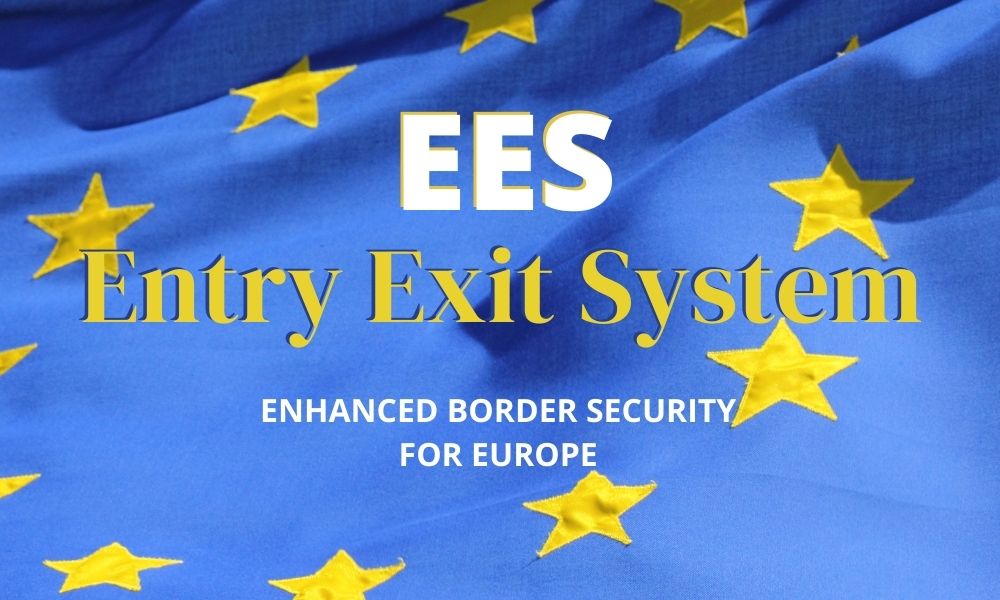
What is Europe’s Entry Exit System (EES)?
By jmarble on Sun, 02/21/2021 - 23:17
How the EES supports the ETIAS travel waiver system
The way we travel to Europe is changing, and soon. The European Travel Information and Authorization System (ETIAS) is a visa waiver program that will launch late 2022 in an effort to give European Union (EU) law enforcement more information about short-term travelers and identify security risks.
The Entry Exist System (EES) is part of border security process that will aid law enforcement and track entry and exit from the external borders of the Schengen Area of Europe.
What is the Entry Exit System (EES) System?
The Entry Exist System is a large IT database that keeps track of every non-EU national entry and exit from the Schengen Area external border. The Schengen Area is a large, 26-country region of Europe that allows for easy travel across internal borders.
EES will work to identify all entries and exits to the Schengen Zone, which will accomplish two main goals:
- Identify non-EU nationals currently in Europe
- Identify unusual migration, such as individuals who stay beyond short-term travel limits (90 days in any 180-day period).
Additionally, EES will expedite border processing through digital passport processing and will replace the previous passport stamp system.
Will the EES System be used in 2021?
Even though ETIAS will not take effect until late 2022, EES will become effective in 2021. The Entry Exit System will apply to both visa holders and short-term travelers and has been in development for about 3 years.
What are the goals of the Entry Exit System (EES) System?
The EES will help EU law enforcement identify unusual migration patterns (such as over-staying) and create a more efficient border security system. The IT database will be accessible to border security officials, member state law enforcement, and Europol (the law enforcement agency of the EU). Database access will help identify potential security issues.
When ETIAS and EES are combined, the result will be stronger external border management. The unified system works to maintain records of traveler identity and length of stay and can potentially recognize terrorist activity, human trafficking, restricted goods trafficking, and other crimes.
Because the current border policy involves physical passport stamps, law enforcement cannot keep a digital record of border crossings and length of stay. Passport stamps, while a hallmark of travel, also take more time at the border than EES, which will be a digital process tied to your biometric passport.
Because EES and ETIAS will be an electronic process, entries and exits can be processed simply by scanning your passport, meaning border processing will be much faster than the passport stamp system. Additionally, because EES records the precise entry date, officials will be notified when individuals have not exited at the anticipated time.
What countries citizens will be subject to the EES?
The Entry Exist System will apply to any individual who is not an EU national, sometimes called a third-country national. The European Commission defines these individuals as, “Any person who is not a citizen of the European Union within the meaning of Art. 20(1) of TFEU and who is not a person enjoying the European Union right to free movement.”
Read about the highlights of the ETIAS Visa Waiver now!
What information does the EES system collect?
EES will apply to short-term travelers (no more than 90 days in any 180-day period) as well as long-term visa holders. The system will use information held on your biometric passport in addition to precise entry and exit details. This biometric information includes:
- A digital facial image derived from your passport photo
- Biographic information that includes given name, surname, birthdate, and sex
- Passport information that includes the passport number, expiration date, and nationality
- Fingerprints
The European Commission recognizes that data privacy is critical and assures travelers that information will be held with extremely high standards for data protection.
Once the visa waiver program launches, the EU will request some of this information as part of the application process. Travel authorization will be granted upon identity confirmation and processing a background check against a security database.
ETIAS applicants will need to will out their applications carefully and precisely in order to avoid delays. Discrepancies in information can potentially result in further security checks in addition to processing delays. Biographical information, passport information, and even information about work or school will be required and accessible when travelers are received at external Schengen borders.
Once approved and processed at the external border, travelers are free to move across internal borders without additional security checks.
Visa-free travel to Europe is here to stay. Plan ahead for ETIAS.
The combination of the European Travel Information and Authorization System and the Entry Exit System will make European travel more secure for Europeans and non-nationals. The ETIAS visa waiver is anticipated launch in late 2022 and will be a requirement for Americans, Canadians, and nationals from 59 other countries. Sign up for our newsletter and stay up-to-date on the application process and European travel news.
Read Next: Is ETIAS mandatory for US citizens?











Add new comment